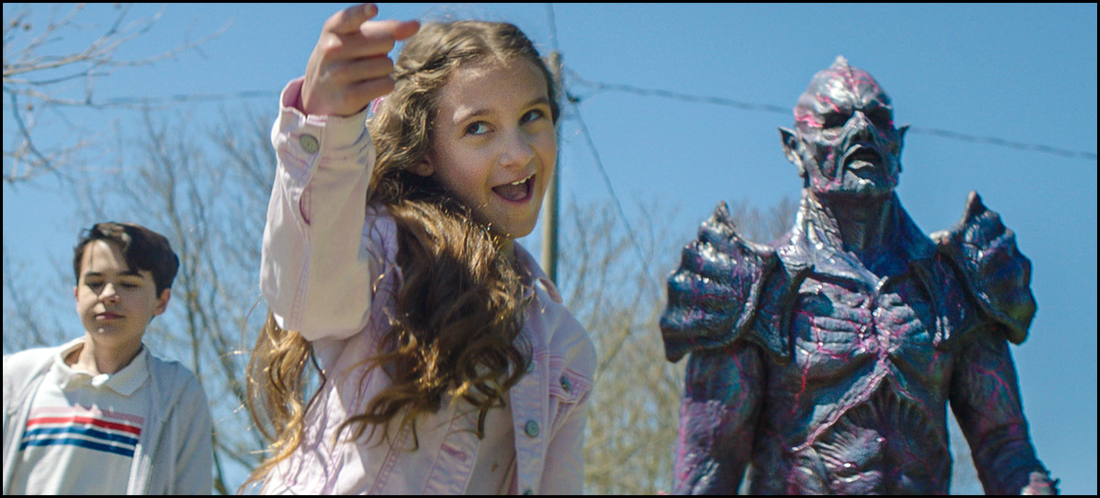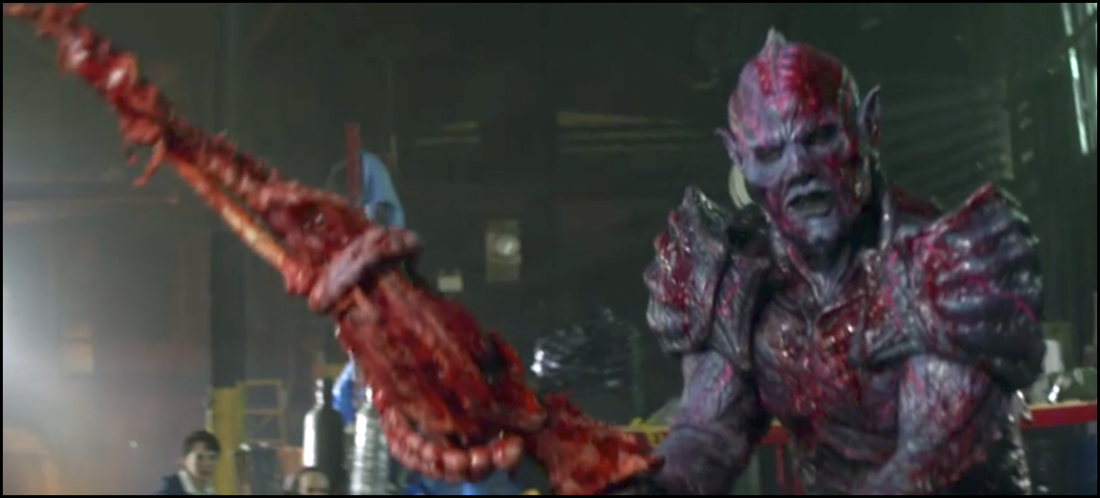Trust me when I saw that there are many, many more films whose themes leaned heartily toward the negative than the positive. Many who’ve studied that decade concluded that, culturally, storytellers were coming off two decades of news headlines exploring the dark side of human nature. Atomic energy led many to believe our civilization was going to destroy itself, and the Cold War certainly exacerbated that possible outcome. President Kennedy was assassinated, and the same fate befell Bobby Kennedy and Martin Luther King. The Vietnam War waged on nightly television. Reality intruded on our escapism, and these films reflected those harsh themes.
But as happens eventually, the pendulum swung back; and the films of the 1980’s gradually returned audiences to the cinematic distractions they so dearly craved, most of which was driven by the big studio successes stemming from George Lucas and Steven Spielberg. 1982’s Star Trek II: The Wrath Of Khan returned Starfleet’s heroes of tomorrow into top form as Captain James T. Kirk squared off successfully against a sworn enemy. 1984’s Ghostbusters delivered a quartet of bumbling ghost hunters saving New York City from the forces of supernatural evil. And 1985’s Back To The Future sent young Marty McFly on a journey back in time to save his future and the life of his best friend.
In sharp contrast to the films of the 70’s, these 80’s motion pictures had an earnestness – a wholesomeness – at their core; and it was that very wholesomeness that drove these various characters to, eventually, do the right thing. In fact, no film better exemplified this narrative foundation than Steven Spielberg’s 1982 Fantasy E.T. – The Extraterrestrial. In E.T., an alien botanist ends up being left behind when his spacecraft leaves Earth to avoid discovery; and this space being – unlike the one at the center of Ridley Scott’s Alien – is a threat to no one. To survive, E.T. will need the help of some suburban youngsters – and their mother struggling with newfound singlehood – if he’s to contact his ship, escape possible government dissection, and win the hearts and minds of audiences worldwide.
I was there in 1982 when E.T. premiered; and – like so many – I was totally enamored of the film. Arguably, it was one of the purest experiences of falling in love at first sight with a movie I had ever experienced. But if you had told me that four decades later I would fall in love with a film that was perhaps the exact antithesis of E.T. yet still somehow managed to capture that same ‘warm fuzzy’ result, I would’ve told you it was impossible. Still, here we are. I’m four decades older. And I’m about to tell you why PG: Psycho Goreman is the perfect alternative to E.T.
From the promotional materials: “Siblings Mimi and Luke unwittingly resurrect an ancient alien overlord who was entombed on Earth millions of years ago after a failed attempt to destroy the universe. They nickname the evil creature Psycho Goreman (or PG for short) and use the magical amulet they discovered to force him to obey their childish whims. It isn’t long before PG’s reappearance draws the attention of intergalactic friends and foes from across the cosmos and a rogues’ gallery of alien combatants converges in small-town suburbia to battle for the fate of the galaxy.”
Whether you agree with the premise or not, one of the chief reasons that films fail to establish an audience during their initial theatrical release is that advertising departments do not know how to market them. This truism applies especially to Science Fiction and Fantasy films, and it’s practically inescapable if the SciFi/Fantasy film mixes humor with the storytelling. The textbook example for this that’s often cited by film aficionados is 1990’s Ron Underwood-directed Tremors, a feature no marketing executive knew how to quantify much less promote in any 90-second trailer. The $11 million dollar film barely took back its production costs and kinda/sorta came-and-went from the box office in a hurry.
However, Tremors premiered on VHS during the home video craze of the early 1990’s; and it practically exploded. Rentals went through the roof, and retailers couldn’t carry enough copies on the shelves to satiate the audience’s demand for it. In fact, Universal Pictures realized quickly that they now had something special on their hands; and they tapped storytellers to expand the Tremors universe. To date, that “failed first film” spawned six sequels as well as a short-lived television series; and that’s not too bad for a missed opportunity, is it?
If there is any justice in this cold, cold universe at all, then PG: Psycho Goreman will suffer the same “failure” … meaning I’d be thrilled to see more of this universe.
Thankfully, Psycho isn’t a big budget extravaganza. If it were, I suspect much of this wouldn’t work. Many of the effects squeezed into its 94-minute running time are practical effects; and they work very well alongside the inspired zaniness of what services as a story here. It’s the low budget appeal of the traditional B-Movie that fuels so much of Psycho – aptly named, I might add – and the audiences who love this stuff are willing to suspend disbelief with a second-rate effect here or there because it all adds to the mirth. It’s escapism for escapism’s sake, delivered with buckets of blood.
Still, I’d be remiss if I didn’t heap some praise on to Psycho’s on-screen talent because they’re the secret sauce to making all of this work as well as it does. Some of the gimmicks even require the young and old in front of the camera to sell this schtick, and Kostanski’s players all hit their marks admirably. Nita-Josee Hanna is pitch perfect as the piss-and-vinegar fueled ‘Mimi’ as is Owen Myre as her less-disturbed brother ‘Luke,’ and their brother/sister camaraderie feels authentic even through the giddiest moment. Steven Vlahos voices PG wonderfully while Matthew Ninaber brings pure menace to the overlord’s physical form. The film is rich with supporting players who, thankfully, are all in on the Kostanski’s joke, and they deliver their respective big and small moments with ease.
Psycho Goreman is at its absolute best when it’s with the young-at-heart, for that’s truly who take to this sort of comic lunacy. In the big finish, Mimi experiences her coming of age moment – as does Luke – the way kids do in classic Spielbergian fashion … but dare I say Mr. Spielberg would not approve of how they handle it? Spielberg would have them save the Earth, but Kostanski sticks with the punch line he started with in the beginning … we’re all doomed. After all, E.T. wasn’t hell bent on eating the children for revenge ... was he?
Highly recommended. The best way to approach PG: Psycho Goreman is to know that no one involved likely took any of it seriously, and you shouldn’t either. It’s funny. You’re meant to laugh at it. At all of it. If you’ve seen Netflix’s Stranger Things, then mix in some of the irreverence of Comedy Central’s South Park, and you get the idea. Life is better when you laugh at it, and I found plenty to laugh at in its 94 blood-soaked minutes.
In the interests of fairness, I’m pleased to disclose that the fine folks at RLJE Entertainment provided me with a complimentary Blu-ray of PG: Psycho Goreman by request for the expressed purposes of completing this review; and their contribution to me in no way, shape, or form influenced my opinion of it.





 RSS Feed
RSS Feed